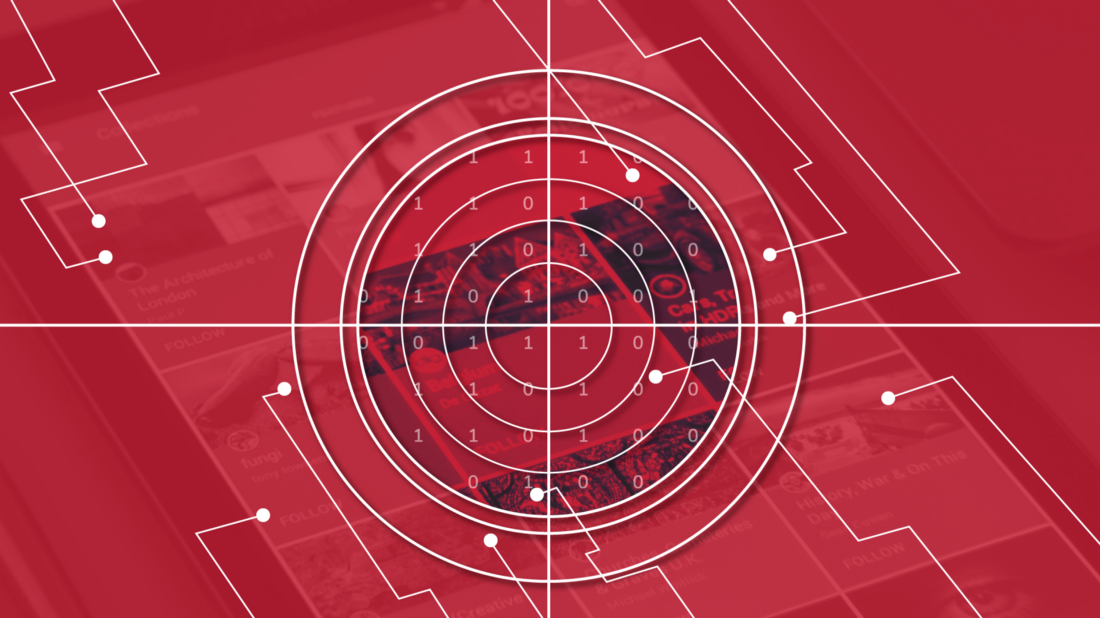
The miracle and malady of microtargeting
Your phone is spying on you — with your full consent.
Every time you open an app, use your GPS, or like a Facebook post, data is gathered, labelled, and filed so that it can eventually be fed to algorithms that tailor the advertisements you see and are supposed to find useful. Search for restaurants often enough on Google Maps and you’ll start seeing ads for options to eat out fitting the profile of those you visited before. Start liking Facebook posts about various travel destinations and the social network will eventually deduce that you are interested in travelling to exotic places every August.
This is what those in the business call “microtargeting.”
Micro what?
Okay, let me clarify it like this: Microtargeting is the attempt to send personalized messages to potential customers based on their interests, emotional state, place of residence, current location, and even personality traits. Sounds awesome, right? But it’s not a new concept.
30 years ago, the personalization of political campaign messages based on postal codes was revolutionary. 20 years ago, brands and political parties targeted households without having a clear idea of who they would reach and to what effect. 10 years ago, that “Internet thing” really kicked off with re-targeting ads — you view a website and a minute later you have the brand’s ad in your social stream. Today, the evolution of personalization has reached microtargeting.
This increasingly precise approach for targeting specific groups of people is made possible by the collection and evaluation of gigantic amounts of information, keyword: Big Data. Progressing digitalization and the global success of social networks enable companies such as Google and Facebook to create detailed user profiles and then sell them to advertisers.
No longer are target groups addressed based on their age or gender alone. With people’s interests and psychological predispositions added to the formula, advertisers promise more effective results for every dollar spent.
Oh how John Wanamaker would rejoice. He once stated, “Half the money I spend on advertising is wasted, the trouble is, I don’t know which half.” Well now he knows, doesn’t he?
But microtargeting isn’t as easy as it sounds.
Just as some people hold vigil at the altar of microtargeting, others are looking to bury it before things get too invasive. Sure, microtargeting gives advertisers myriad options for targeting specific people, but at what costs? Should we really sacrifice our freedom just for the “luxury” of seeing personalized ads?
So is it good or bad? Here’s my take:
The concept is great
We see hundreds of ads daily, many of them misplaced, useless or downright weird. I see more pet food advertisements than I care to remember — all of them a complete waste of money.
Microtargeting eliminates this issue because the data should know that I don’t watch cat videos on Facebook, never liked a post about a dog, and never appeared in a photo with a pet (that Grizzly bear shot from Canada was not a pet, FYI). This is great for advertisers because they can save money by only showing ads to people who might be genuinely interested.
It also means that I can finally see ads that interest me: inspiring travel locales, rugged outdoor clothing or delicious chocolate. These are the ads I want to see. I might even watch the video ads until the end because I am actually curious to see what kind of chocolate I can store in my rugged outdoor jacket while hiking the Inca Trail.
You might call this a win-win situation. Everybody is happy.
If only it were that easy.
The concept is also terrible
Now that we’ve established that microtargeting is beneficial for everybody involved, we should shed some more light on the negative aspects.
Even today, most people still have not grasped the implications of using “free” online services. That no payment is required for services like social networks, online newspapers, and email is often too enticing given the utility of the platforms. Many don’t even realize that they are not the customer, but rather the product. And as the product we are analyzed and sold.
“Big brother is watching you, but he’s no longer a dictator; instead, he’s a desperate and persistent door to-door salesman. Call him Big Salesman!”
For many consumers it’s scary to be targeted based on their psychometrics (fancy word to describe a human’s personality). Not that social networks and search engines care. They have no problem collating much of your online activity to increase personalization options for advertisers. And the more information you provide, through searches, downloads, likes, comments and shares, the more accurate your psychometric profile will be.
This simple rule explains why social networks actively encourage their users to reveal as much information about themselves as possible (ever answered a quiz about which kind of cheese you are?). The more accurate the data, the higher the potential financial return.
But why is this a problem? Because Facebook and Google know more about us than our friends, family, and spouse. Every click, every photo, and every website visit is analyzed. And while most of our friends wouldn’t sell us to the highest bidder (hopefully), social networks are more than willing to do so.
As we become increasingly “transparent citizens,” the question we should be asking ourselves is whether giving away all of this data is worth the targeted ads that we’ll supposedly see.
The concept doesn’t even work
The success of microtargeting is mainly based on the narrative of “reaching the right people.” Conventional advertising is limited in its ability to target, whereas microtargeting only targets warm leads.
But what constitutes a warm lead? Can advertisers trust the quality of the target groups available to them? More to the point, can Facebook really deduce your personality traits from your online behavior?
Once again, the answer is not a straightforward yes or no. Studies appear to show that “With only a person’s Facebook likes […] AI could reliably predict sexual orientation, ethnicity, religious and political views, personality traits, intelligence, happiness, use of addictive substances, parental separation, age, and gender.”
This sounds a bit far-fetched, right? Yes, the studies could predict some of those traits, but “reliably” is an exaggeration. If the margin is 52% to 48%, it might be statistically significant, but it’s still useless because the answer would be wrong almost half the time.
If you want to know what Facebook thinks about you, it’s not hard to find out. There are several tests, one of which was developed by the scientist inthe above study, Michal Kosinksi. His Apply Magic Sauce test analyzes your personality based on your online behavior. To do so, you must download your own Facebook history — a multi-GB file that is, quite frankly, eye-opening.
Once the results come in, you’ll either be shocked or amused. I was amused.
“Your digital footprint is fairly androgynous; it suggests you’re probably female, but you don’t repress your masculine side — 60% female”
Good to know! Last time I checked, I was more on the male side of the spectrum.
“Your digital footprint suggests that you enjoy and actively seek out social occasions, but would say that they’re not everything. You might say that sometimes it is nice to step back for a while and have a quiet night in.”
No, I don’t. I don’t like going out. I am utterly misanthropic. Wrong again.
[insert table picture]
This table tells me that I am more or less average in every aspect. But is it true? I’d like to believe that it’s not.
There could be another reason for the results: my data. I am not overly active on social media: left a of couple likes on some pages years ago and rarely comment or share. Occasionally I’ll post a photo or video. It stands to reason that my limited activity is not sufficient to generate a detailed picture of me. I am, therefore, not the ideal consumer for microtargeting efforts. The same can be said for a significant number of others, especially those who are more mindful of their online behaviour.
So, what does it all mean?
Should you ignore microtargeting because it is ethically questionable and not always accurate? Or should you allocate your entire budget to personalized ads?
If you’re concerned about ethics, remember that people use those services of their own free will. Nobody is forced to use Facebook. You do not have to agree with me on this, but for me that means the data can be used.
As to the inaccuracies, microtargeting is better than simply using age, gender, or area code. There will always be some mistakes, but the hope is that the success rate, and ultimately the ROI of your ad spend, will be higher.
Should you go all-in on microtargeting? Please don’t. This is product- and brand-dependent, of course, but you should never limit your communication efforts to a single channel.
Microtargeting should be considered a new, shiny tool in a marketer’s toolbox. It can help tailor your message to a more specific audience and increase ROI. However, it’s important not to get carried away simply because it’s new and shiny. It’s not a silver bullet. Learn how to use it, understand its benefits and pitfalls, and allow it to complement your advertising activities.
